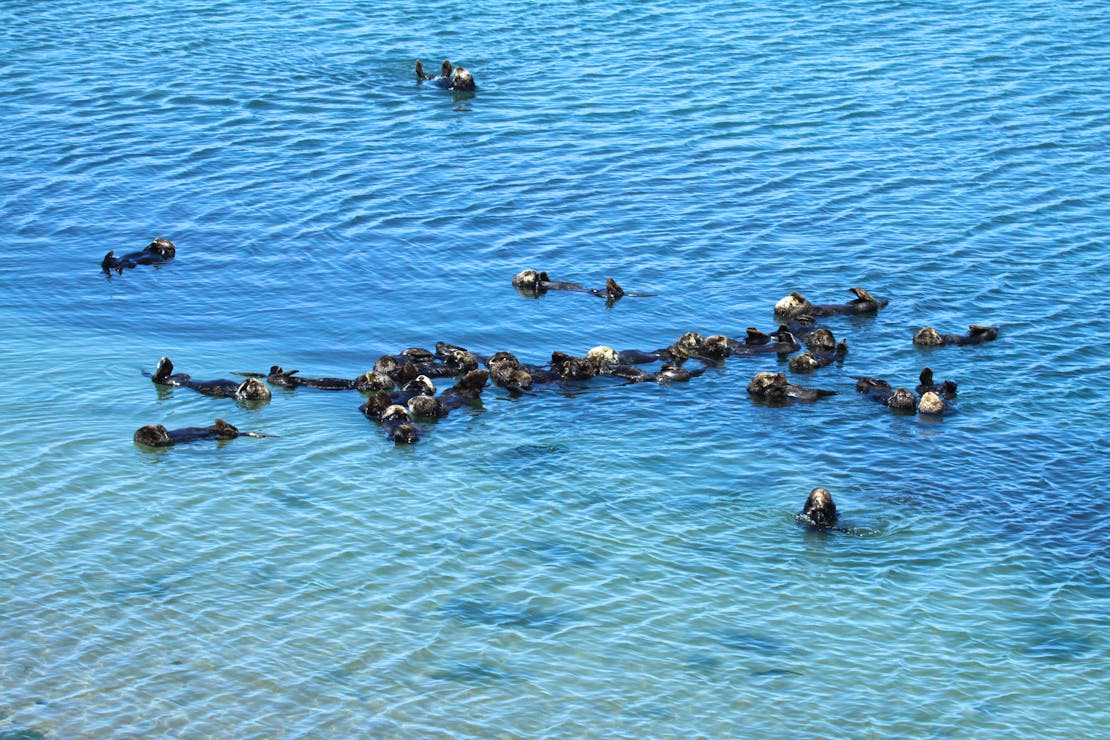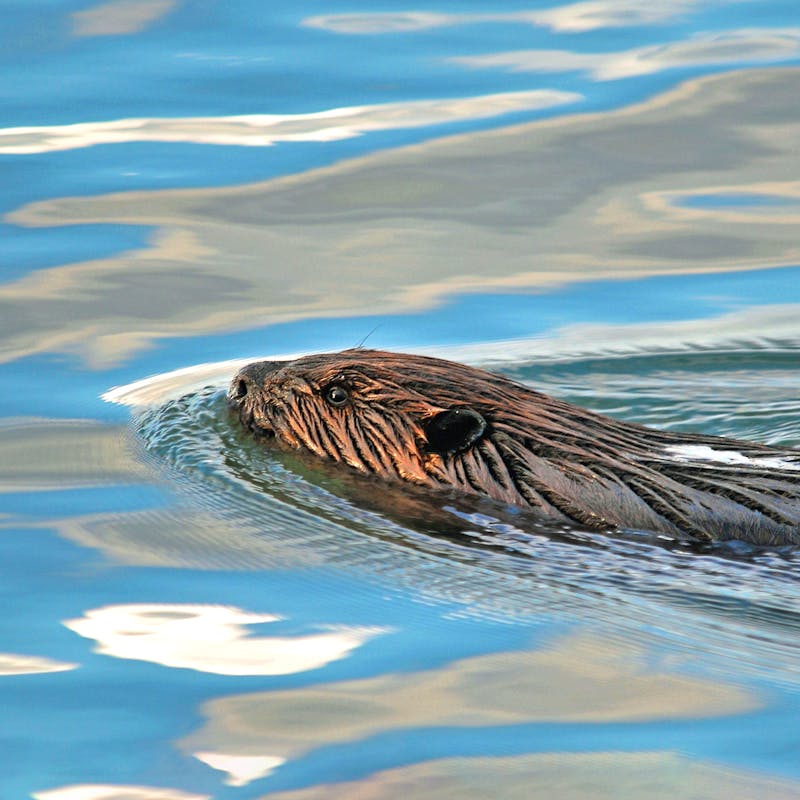Turn on the news and you will see the effects of climate change playing out in real time in the United States and across the globe. We see rampant wildfires, coastal flooding, increased severity and frequency of hurricanes, and record high temperatures (2020 was the second warmest year on record after 2016). All these events have one thing in common: climate change. Climate change increases the intensity and frequency of weather events, and will continue to wreak havoc unless we do something about it. Most widely talked about, reducing greenhouse gas emissions would require transformative changes in energy, transportation and food production, along with changes in social behaviors. But another major solution to consider is nature’s ability to absorb and store carbon.
Wildlife and the diversity of species within an ecosystem increases an ecosystem’s ability to store carbon, making wildlife’s role in the fight against climate change indispensable. Levels of carbon dioxide in the atmosphere are balanced by the natural movement of carbon through certain ecosystems, during which CO2 is absorbed by plants, sediments or the surface of the ocean. From there, it is stored for long periods of time. The top five ecosystems for storing carbon per unit of area are tundra, seagrass, mangrove forests, salt marshes and forests. In the United States, temperate and boreal forests absorb enough carbon to decrease national annual net emissions by 11%. But without wildlife, ecosystems cannot operate at the maximum level to fight climate change.
Species both big and small support the important roles of ecosystems, but new research is highlighting how for North American species, those at the top of the food chain have outsized influence on the structure of an ecosystem. Gray wolves, for example, contribute to habitat and climate stability by keeping prey species at stable population levels. In a recent study, researchers found that when the decline in gray wolves in Yellowstone and Isle Royale National Park led to an increase in populations of elk and moose, the herbivores over-browsed trees and shrubs and the forests did not capture carbon at their maximum capacity. Researchers estimated that the presence of wolves in all boreal forests in the United States would increase carbon storage between 46 million to 99 million metric tons.
Much like wolves, sea otters are keystone species. These marine mammals eat sea urchins, and sea urchins then eat kelp. Seaweed and other types of submerged aquatic vegetation can store a lot of carbon (20 times the amount per acre of land forests). Sea otters are listed as threated under the Endangered Species Act (ESA), and their declining numbers in certain ecosystems caused sea urchin populations explode, depleting seaweed and limestone reefs where seaweed can grow. The presence of otters in an ecosystem translates to an increase in carbon storage by volume between 5.6 to 11% over their range, proving that the role of sea otters in climate change mitigation is vitally important.
Beavers, another keystone species often thought of as an ecosystem engineer for their roles creating habitat through dam building, help and hurt in the fight against climate change. The organic material in their dams store carbon and the dams. The organic material in their dams store carbon and the dams filter out pollution and reduce floods and the spread of wildfires. Climate change is causing more precipitation to fall as rain rather than snow, leading to more flooding and less water availability downstream in the summer. The presence of beaver dams at higher elevations can slow down this type of water flow and avert early runoff, much like snow does. However, scientists point out that every ecosystem is different, so while beavers reduce early river runoff and flooding in Colorado, in Alaska they are carving out channels and building dams in once frozen Arctic tundra and releasing carbon and methane, causing increases in green emissions. In fact, while certain beaver habitats can capture up to 470,000 tons of carbon a year, others can release 820,000 tons of carbon a year.
Whales also play a significant part in removing carbon from the atmosphere and sequestering it to the deep ocean, where it can remain for hundreds of years. When whales die, their bodies often sink down to the deep ocean. Each “whale fall” can sequester tons of carbon. Furthermore, throughout their lives large whales can sequester carbon through defecation. The nutrients they release creates phytoplankton blooms; as that phytoplankton dies it sinks, carrying the carbon in it to the deep ocean. For example, one scientific research paper estimates that the approximately 12,000 sperm whales in the Southern Ocean remove 20,000 more metric tons of carbon from the atmosphere than they add through respiration. As whale populations were devastated by the whaling industry over the past few centuries, their ability to sequester carbon was dramatically decreased. Conserving whales can therefore help reduce the amount of carbon dioxide in the atmosphere.
Overall, biodiversity is extremely important within every ecosystem. A lack of species diversity can have a ripple effect throughout the rest of the ecosystem, and in turn, reduce the ability of the ecosystem to capture and store carbon. Our planet is on the verge of a sixth mass extinction. As we learn more about the roles species play in combatting climate change and creating healthy ecosystems, protecting wildlife is imperative.
One important tool for the protection of imperiled species is the ESA. Over 95% of species listed under the act have continued to survive, and hundreds are on the path to recovery. The ESA offers protection not only for declining populations of wildlife, but protects the integrity of relationships in the ecosystem as well. And like protecting species themselves, protecting species’ habitats and ecosystems around the world is critical to preserving biodiversity. 30x30, a global movement to protect at least 30% of land and oceans for biodiversity and climate by 2030, is an ambitious goal that would ensure wild spaces for wildlife and people alike. Defenders has created a guide, “Getting to 30X30”, for the conservation of biodiversity and mitigation of climate change in the U.S. global movement, 30x30, sets a path for protecting 30% of land and ocean by 2030. We’ve compared current spatial patterns of ecosystems in the U.S. that store carbon and shelter biodiversity in relation to protected areas and marked those as high priority for this initiative. In protecting species and land and waters, we can fight climate change and secure a sustainable future.















Follow Defenders of Wildlife
facebook bluesky twitter instagram youtube tiktok threads linkedin